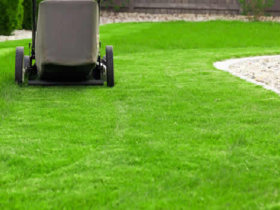The Role of Seasonal Plants in a Beautiful Garden

Creating a beautiful garden that remains vibrant throughout the year requires careful planning and an understanding of seasonal planting. By selecting the right plants for each season, you can ensure continuous colour, texture, and interest in your garden. Seasonal plants not only enhance the aesthetic appeal of your garden but also support local wildlife and improve the overall health of your garden ecosystem. In this article, we will explore the role of seasonal plants in maintaining a beautiful garden and provide tips on selecting and caring for plants in each season.
Spring Plants
Best Flowers and Vegetables to Plant in Spring
Spring is a time of renewal and growth, making it the perfect season to introduce new plants to your garden. Early spring flowers such as crocuses, daffodils, and tulips bring vibrant colours after the dull winter months. These bulbs should be planted in the autumn to bloom in spring.
For vegetables, spring is ideal for planting cool-season crops like peas, lettuce, radishes, and carrots. These vegetables thrive in the mild temperatures of spring and provide fresh produce for your table.
Tips for Planting and Care
Prepare your garden beds by clearing debris and enriching the soil with compost. Ensure your plants have adequate space to grow and follow specific planting instructions for each type. Water your new plants regularly, especially during dry spells, and protect them from late frosts with cloches or fleece.
Summer Plants
Top Choices for Summer Blooms and Crops
Summer is the season of abundance, with many plants reaching their peak. Flowers such as marigolds, petunias, and zinnias thrive in the warm weather and provide continuous blooms throughout the season. Consider planting perennials like daylilies and coneflowers for long-lasting summer colour.
Warm-season vegetables such as tomatoes, cucumbers, peppers, and beans are perfect for summer planting. These crops require full sun and consistent watering to produce a bountiful harvest.
Tips for Handling Heat and Watering
Summer heat can be challenging for your garden. Mulching around plants helps retain soil moisture and keep roots cool. Water deeply and infrequently to encourage deep root growth, which makes plants more drought-resistant. Early morning or late evening watering reduces evaporation and ensures that water reaches the roots.
Autumn Plants
Ideal Plants for Autumn
Autumn is a season of transition, offering a last burst of colour before winter. Chrysanthemums, asters, and sedums are excellent choices for autumn flowers. These plants not only add vibrant hues but also attract pollinators preparing for winter.
Autumn is also the time to plant bulbs for spring blooms, such as daffodils, tulips, and hyacinths. For vegetables, consider planting cool-season crops like kale, broccoli, and Brussels sprouts, which can withstand cooler temperatures.
Tips for Extending the Growing Season
Extend the growing season by using row covers or cold frames to protect plants from early frosts. Continue mulching to insulate soil and conserve moisture. Harvest vegetables promptly to prevent damage from cold weather and pests.
Winter Plants
Hardy Plants that Thrive in Winter
Winter gardening can be rewarding with the right plant choices. Hardy plants like hellebores, winter pansies, and ornamental cabbages provide colour and interest during the cold months. Evergreen shrubs such as holly, boxwood, and juniper add structure and greenery to the winter landscape.
Winter is also a good time to plant bare-root roses and trees, which establish their roots before the growing season begins.
Tips for Protecting Plants from the Cold
Protect sensitive plants from frost by covering them with horticultural fleece or straw. Move potted plants to sheltered locations, such as a greenhouse or indoors. Mulch around the base of plants to insulate roots and prevent soil from freezing and thawing cycles.
Year-Round Beauty
Combining Seasonal Plants for Continuous Garden Beauty
The key to a beautiful garden year-round is combining plants that bloom in different seasons. Plan your garden layout to ensure there is always something in bloom. Mix perennials, annuals, and bulbs for continuous colour and interest. Incorporate evergreen shrubs and trees for structure and winter appeal.
Planning and Designing for Year-Round Interest
Create a garden plan that includes plants with different bloom times, foliage textures, and colours. Use garden journals or apps to track planting schedules and maintenance tasks. Consider the height, spread, and growth habits of plants to ensure a balanced and harmonious garden design.
Conclusion
Incorporating seasonal plants into your garden design is essential for maintaining year-round beauty and interest. By understanding the specific needs and characteristics of plants for each season, you can create a vibrant and dynamic garden that provides continuous enjoyment. Thoughtful planning and care will ensure that your garden thrives throughout the year, offering a sanctuary for both you and local wildlife.
For professional advice and assistance in planning your seasonal garden, visit our friends at Gardeners Reading for expert info and guidance.
Leave a Reply
You must be logged in to post a comment.
















Leave a Reply